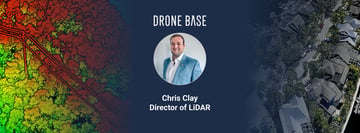Drones are now carrying out all kinds of data gathering tasks in all manner of industries. In a handful of cases, they go a step further and actively take part in processes rather than simply providing intelligence.
This evolution is down to many factors. Drones are now relatively affordable, better regulated, easy to fly and highly capable. But the technology is also a lot safer than a few short years ago - a factor that shouldn't be underestimated when looking at industry adoption.
Safety first
Aviation has inherent risk. What goes up must come down, and if what goes up is a heavy and expensive flying robot, the potential for damage and/or injury in the case of a crash is very real.
Fortunately, a bunch of technologies have been developed by the industry with safety in mind: Return to home functions, improved flight stability, geofencing, accurate flight planning and obstacle avoidance, to name a few.
All have helped make using drones for commercial applications safer, more secure and more reliable.
But this is just the beginning. Efforts are underway around the world to develop technologies that will better integrate drones into the airspace and provide further layers of safety and accountability, from Remote ID to the all-encompassing concept of UTM.
Obstacle avoidance
Obstacle avoidance is probably the most interesting area of development because there remains so much room for progress. The first sophisticated computer vision we saw combined with consumer and commercial drones came from Yuneec and DJI in 2016.
The Phantom 4, the Typhoon H and Intel’s Real Sense tech suddenly made it possible to fly a drone without having to worry (as much) about an accidental collision. It was an early and significant step in drones becoming smart enough to effectively pilot themselves.
The technology was a necessary part of the confidence equation. Safety will always be a major priority when introducing new vehicles to working environments. Even a limited ability to prevent accidents will always be embraced.
DJI’s Advanced Pilot Assistance System has since grown more comprehensive and now - depending on the drone - operates in several directions with multiple sensors to improve the safety of operations.
Elsewhere, Skydio has introduced a new benchmark of sense and avoid to the market. The company now offers its computer vision platform for commercial developers to build ‘skills’ on top of.
Niche manufacturers and research teams around the world are taking things further. Projects are underway to explore how drones could work in more challenging and dangerous environments.
For example, robotics experts in Zurich, Switzerland, are adding to their drones a sensor called an event camera. Instead of recording video every second and analyzing the images there and then, the system works by activating when the camera’s pixels spike in intensity.
This bypasses the processing bottlenecks you get with standard sense and avoid systems, and has been used to give drones the ability to actively dodge moving obstacles.
Autonomy and the future
Skydio’s R1 drone has 13 cameras that make up a simultaneous localization and mapping (SLAM) system. This means it can effectively navigate around static obstacles and fly with complete autonomy. But if you start throwing balls at it like a Swiss researcher, it’s not going to end well.
The challenge for the future is to develop industrial drones that can build a 3D model of the world in front of them, navigate through it, understand it in a deeper sense and respond dynamically to moving variables.
That combination is beyond what we currently see in the drone industry. And it’s here that the possibilities are quite literally weighed down by reality, for now.
You’d imagine that a system like that would need to bring together a bunch of different sensors: simultaneous localization and mapping and an event camera, for starters. That’s going to be expensive and heavy. Neither of those properties is ideal for making commercial drone solutions viable.
Once a drone can safely navigate dynamic environments, the applications available will demand even more advances. Take door to door urban delivery services or autonomous maintenance swarms. How long will it be before another level of AI is introduced to give drones the ability to contextualize and semantically understand their working environments?
It starts with sense and avoid technology. But that whole concept sits on a sliding scale. Stopping short of brick walls is at one end. Navigating the industrial environments of the future is at the other.
For a look at the benefits that will come from smarter, more aware drones, take a look at how the technology is already being put to work in dangerous places.





